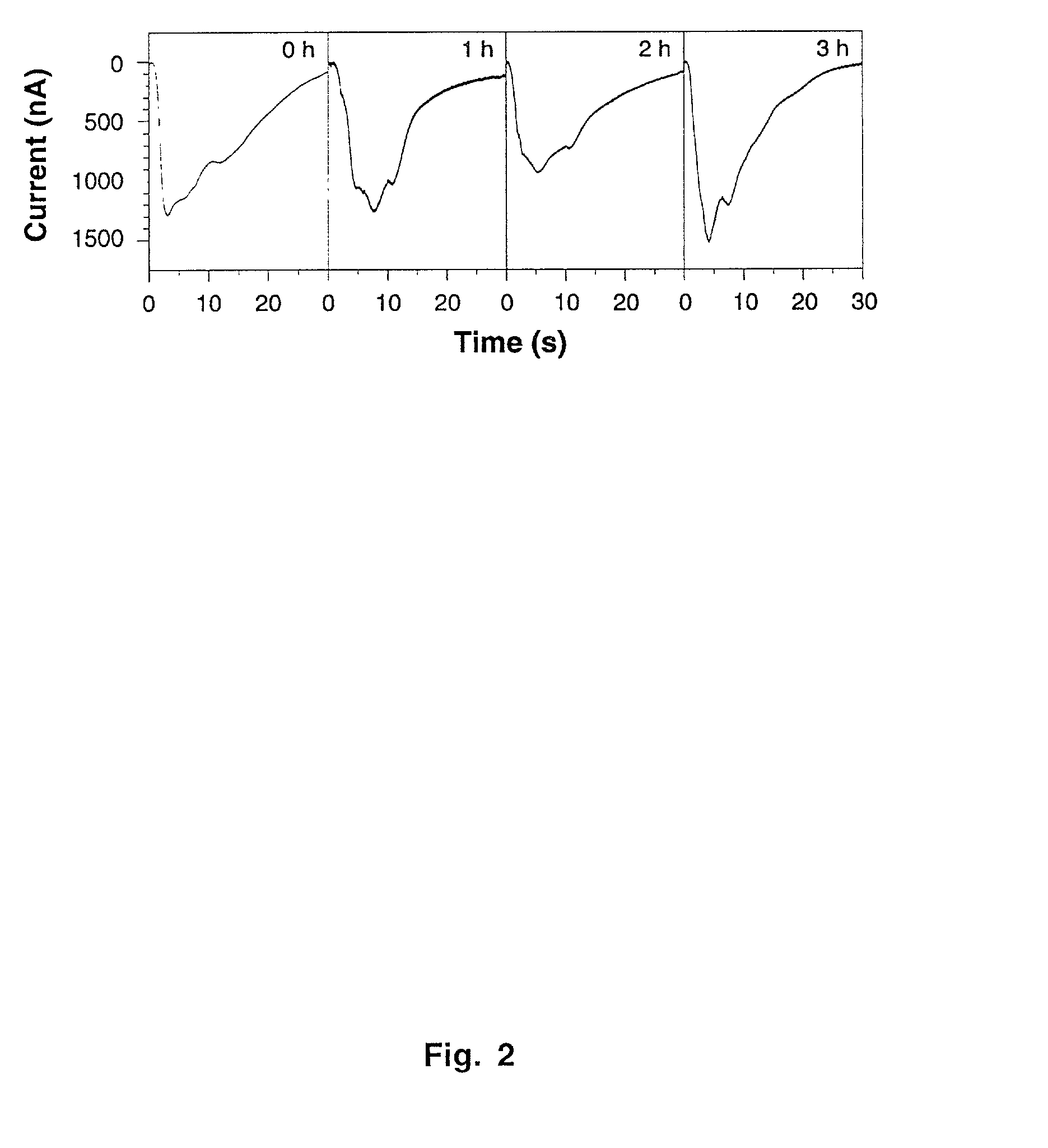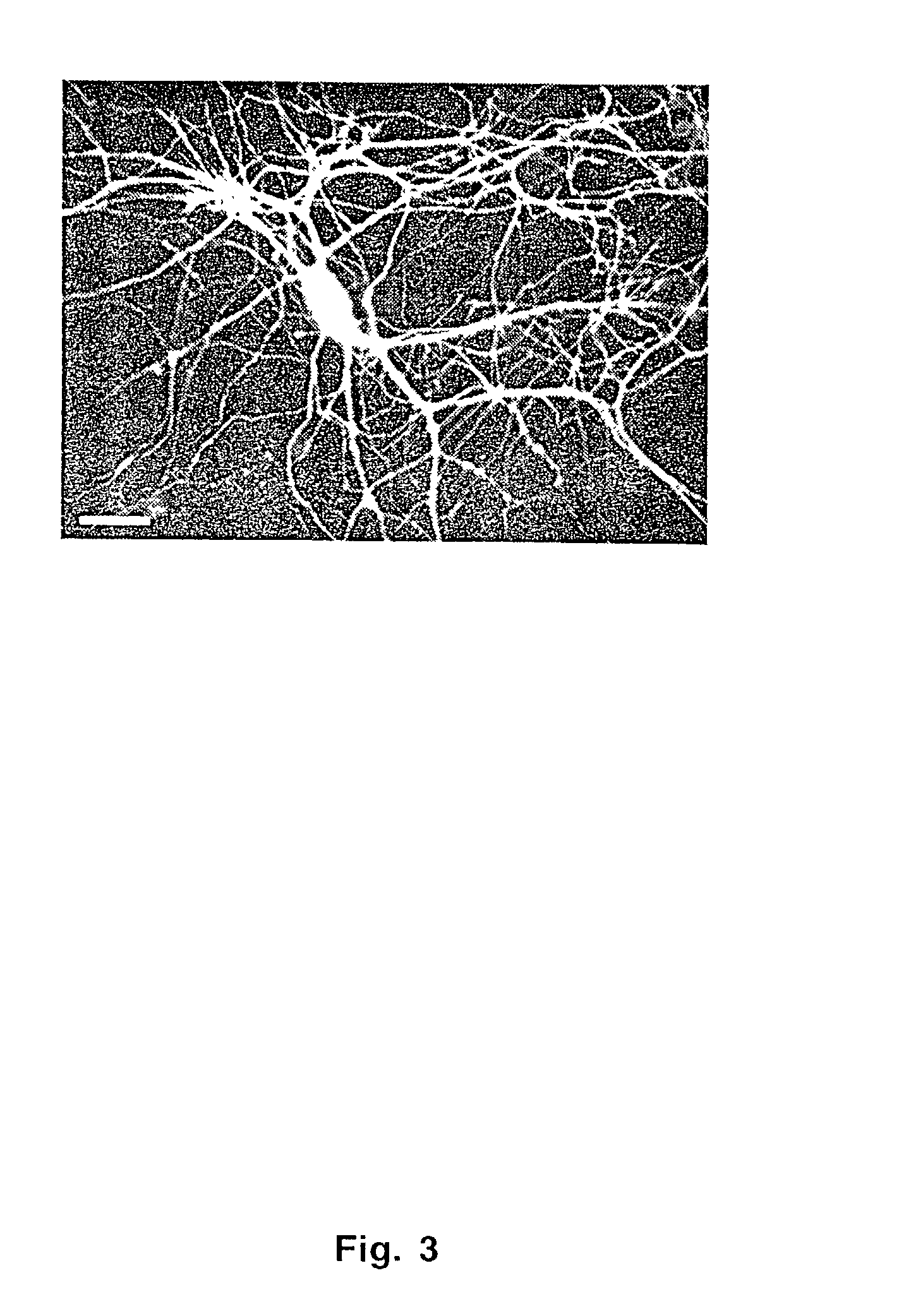Bio-synthetic photostimulators and methods of use
- Summary
- Abstract
- Description
- Claims
- Application Information
AI Technical Summary
Benefits of technology
Problems solved by technology
Method used
Image
Examples
example 1
Phototransduction Components
[0099]The coding regions (GenBank accession numbers in parentheses) of ninaE (K02315), ninaA (M62398), arrestin-2 (M32141), Gα (dgq; M58016), Gβ (gbe; M76593), Gγ (AJ250440), norpA (J03138), trp (M34394), trpl (M88185) and inaD (U15803) were amplified by PCR from the Drosophila head cDNA library GH (Berkeley Drosophila Genome Project) and ligated to pXES43, a derivative of pGEMHE (Liman, Tytgat et al. “Subunit stoichiometry of a mammalian K+ channel determined by construction of multimeric cDNAs,”Neuron 861–71 (1992)). Capped transcripts for injection into Xenopus oocytes were synthesized directly from these templates after linearization (MEGAscript T7, Ambion). Plasmids for expression in neurons (pChARGe-1 and pChARGe-2) were based on the pCI-neo backbone (Promega). pChARGe-1 carried ninaE and Gα under CMV- and SV40-control, respectively; pChARGE-2 contained sequences encoding EGFP (with a 20-amino acid N-terminal GAP-43 tag that confers plasma membrane ...
example 2
Xenopus Oocytes
[0101]Stage VI oocytes were microinjected with the specified mRNA mixtures, which were adjusted to keep the doses of individual messages constant at 2–4 fmol / oocyte. Photocurrents were recorded at −80 mV with a two-electrode voltage-clamp amplifier (Axoclamp-2B, Axon Instruments) 2–4 days after mRNA injection. Electrodes (2–3 MΩ) were filled with 3 M KCl; the extracellular recording solution (Barth's Saline) contained, in mM, 87.5 NaCl, 2 KCl, 2.4 NaHCO3, 2 CaCl2, 1 MgCl2, 5 Tris-HCl, pH 7.2. Signals were externally amplified (CyberAmp 380, Axon Instruments) before digitization at 100 Hz (Digidata 1200, Axon Instruments). To block IP3-sensitive Ca2+ stores where indicated, 20 μM xestospongin C (Gafni et al., 1997; Calbiochem) was present throughout the experiment, beginning with the retinal load.
example 3
Rat Hippocampal Neurons
[0102]Hippocampal neurons obtained from E19 rats were grown in dissociated cultures (Yuste, Miller et al. “Synapto-pHluorins: chimeras between pH-sensitive mutants of green fluorescent protein and synaptic vesicle membrane proteins as reporters of neurotransmitter release,”Methods Enzymol 522–46 (2000)) and transfected with a calcium phosphate precipitate (pH 7.08) formed from a 1:1 mixture of CsCl-banded pChARGe-1 and pChARGe-2. Neurons were exposed to 4.2 μg / cm2 of precipitated DNA for 20 minutes. Transfections were done on day 8 after plating, recordings on days 6–10 after transfection. Neurons were identified under DIC and epifluorescence illumination (to distinguish transfected from untransfected cells; FIG. 3) and placed under whole-cell current clamp before reconstitution of NinaE with retinal. Patch pipettes (˜2.5 MΩ) contained, in mM, 120 K-gluconate, 10 KCl, 5 ATP, 0.3 GTP, and 10 K-HEPES, pH 7.2. The extracellular recording solution contained, in mM...
PUM
| Property | Measurement | Unit |
|---|---|---|
| Concentration | aaaaa | aaaaa |
| Wavelength | aaaaa | aaaaa |
Abstract
Description
Claims
Application Information
 Login to View More
Login to View More - R&D
- Intellectual Property
- Life Sciences
- Materials
- Tech Scout
- Unparalleled Data Quality
- Higher Quality Content
- 60% Fewer Hallucinations
Browse by: Latest US Patents, China's latest patents, Technical Efficacy Thesaurus, Application Domain, Technology Topic, Popular Technical Reports.
© 2025 PatSnap. All rights reserved.Legal|Privacy policy|Modern Slavery Act Transparency Statement|Sitemap|About US| Contact US: help@patsnap.com



